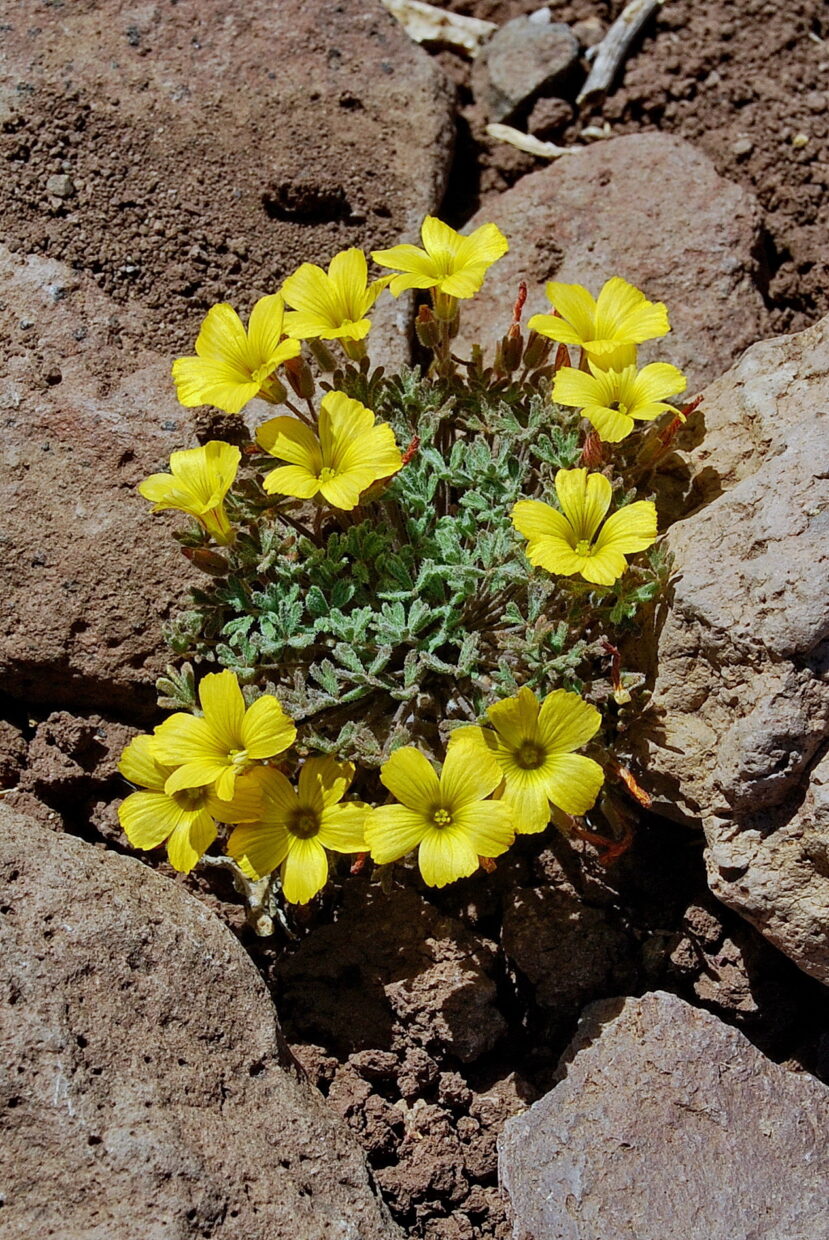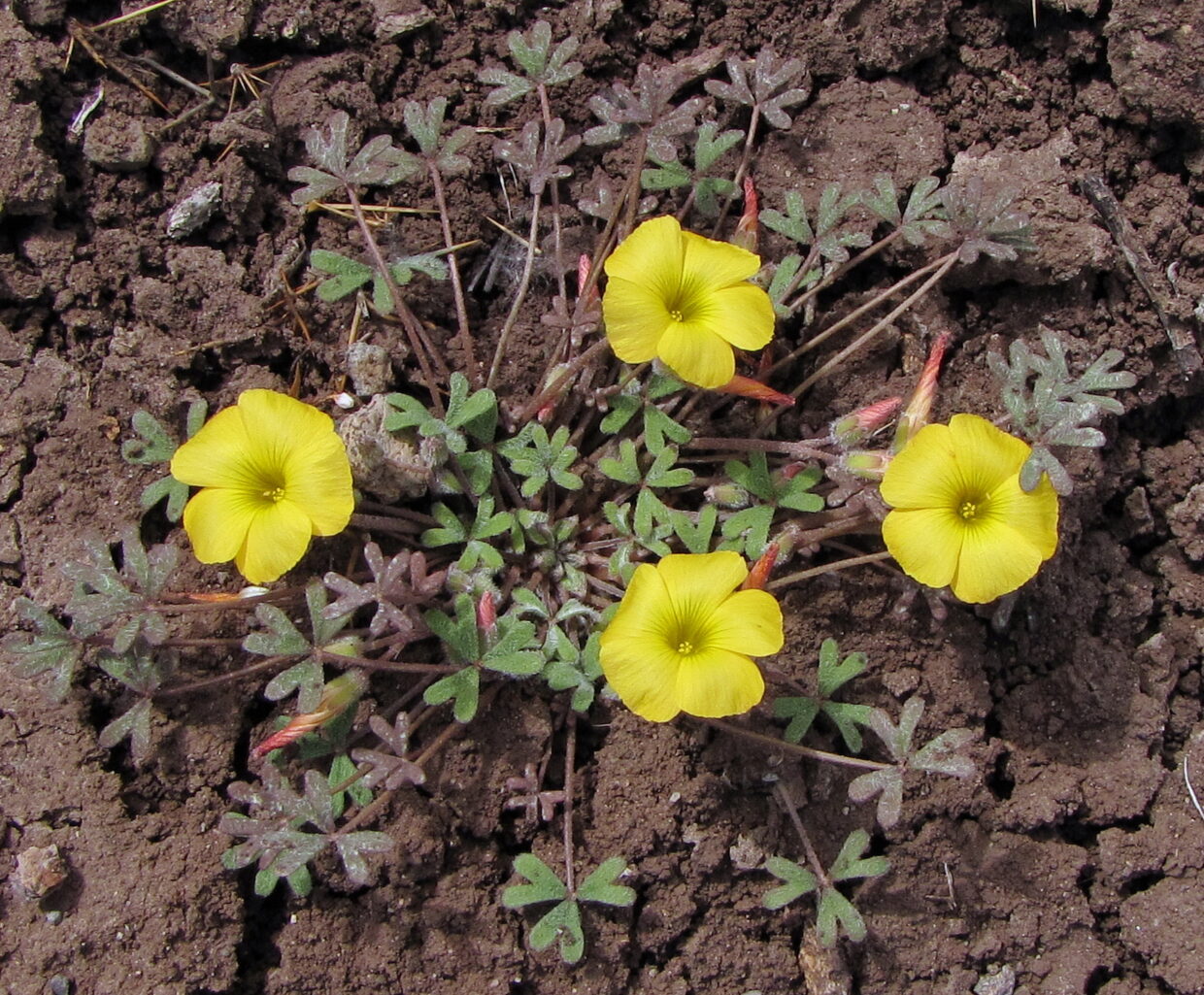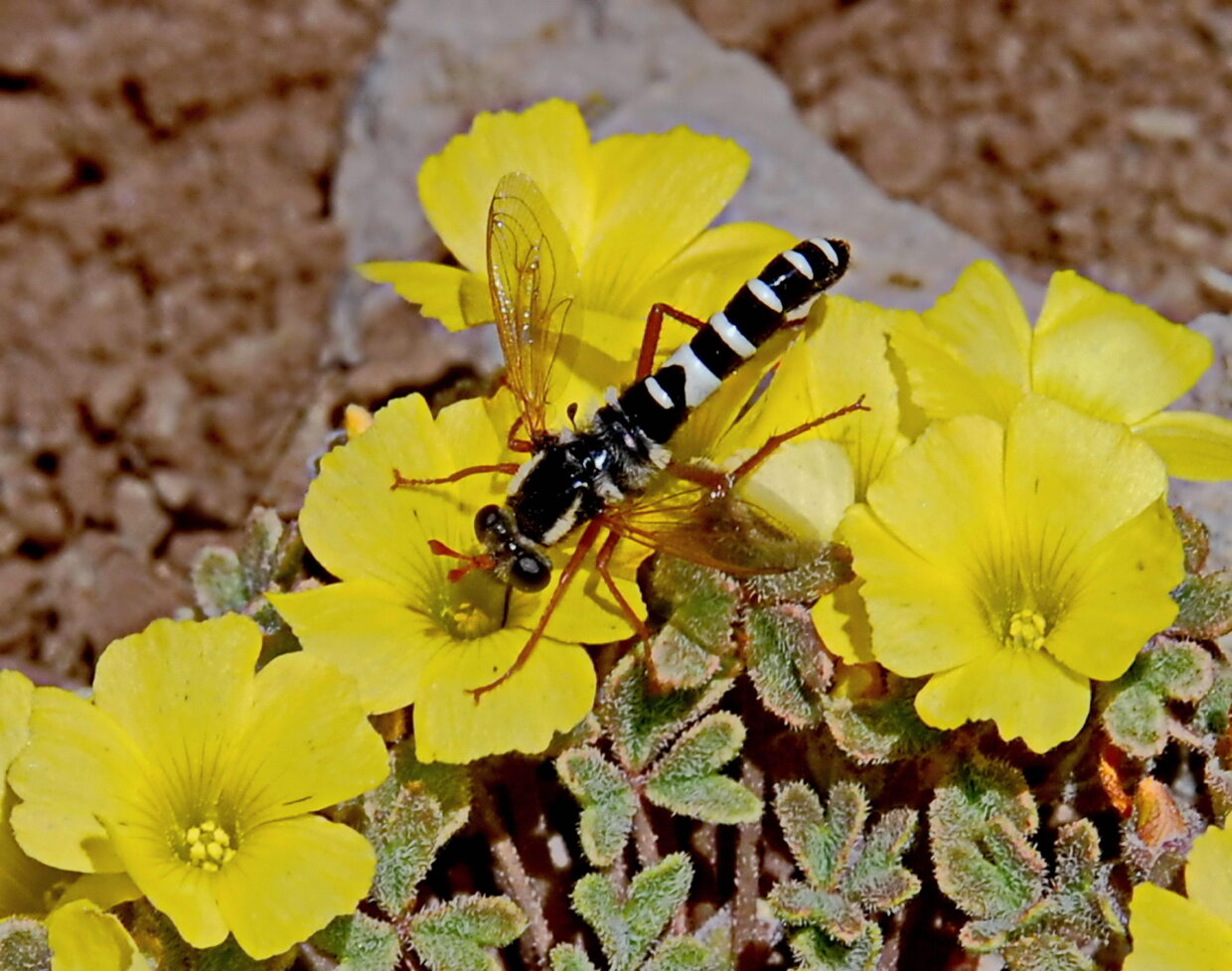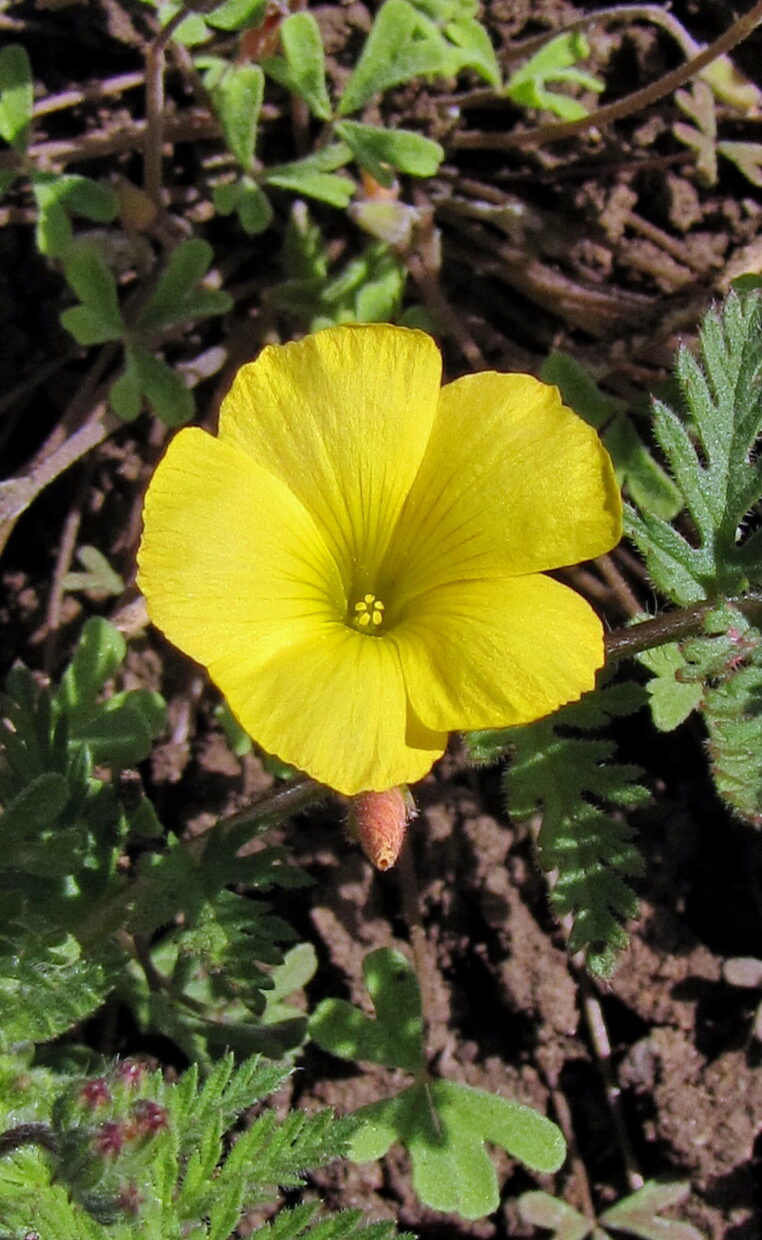Place of Publication
Intl. Rock Gard. 138: 21, [figs. 5-12] (2021). (2021)
Type citation
CHILE. Región de Valparaiso, Provincia de Aconcagua, Los Ranchillos, 2.45 km NW of Cuesta Chacabuco (the Chacabuco Pass), 32º36'32"S 70º42'45"W, 1285 m, 17 October 2014, leg. J.M. Watson & A.R. Flores, F.& W. 12802 (holotype CONC isoptypes SGO, herb Watson & Flores).
References
-
Watson & Flores (2021)
Watson, J.M. and Flores, A.F. 2021. Oxalis ranchillos (Oxalidaceae, Oxalis L., sect. Alpinae Reiche), a new rare local endemic species from central Chile. International Rock Gardener 138:19-44.
Regions
Habitat
Mediterranean and Central plain steppe
Distribution and habitat
Only known from a very limted are around the Type location. Altitudinal range of 1050 to 1296 meters. Found within spiny mattoral vegetation, dominanted by the woody components of Leucostele chiloensis and Vachellia caven (parasitised by Tristerix verticillatus). Geophytes include: Alstroemeria angustifolia var. velutina, A. piperata, Conanthera trimaculata, Leucocoryne ixioides, Olsynium junceum, Phycella cyrtanthoides and Zephyranthes arzae. Other species can include: Calycera eryngioides, Helenium aromaticum, Heliotropium geissei, Loasa tricolor, Moscharia pinnatifida, Phacelia brachyantha, Tropaeolum azureum, T. looseri, T. tricolor and Viola chamaedrys.
Conservation status
- Critically Endangered (Watson & Flores (2021))
Habit
Annual herb, 8-20 cm across.Flowers from October to January.
Key characteristics
Differs from all other related yellow-flowered annual species (section Alpinae) by a combination of its prostrate growth habit; deeply divided leaflets; multi-flowered inflorescences; fruiting stems always prostrate; and large flowers far exceeding the calyx. Oxalis ranchillos nearest related species is O. mira which is also annual, notably with long, leaf stalks, and multi-flowered inflorescences of equal length at the circumference. However, they differ by the sepals of O. ranchillos having hairs restricted to the margins (vs. throughout) and leaflets twice as long as broad (vs. 3-4 times).











